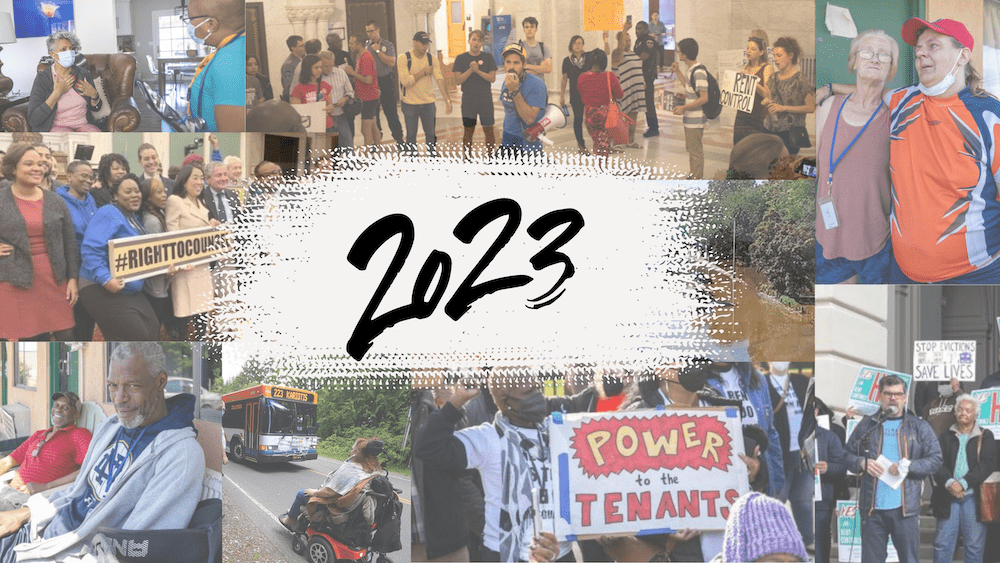
CFPB offices. Photo by Ted Eytan via flickr, CC BY-SA 2.0
Kathy Kraninger is a name that consumer protection advocates should become very familiar with. On Dec. 11, 2018, Kraninger was sworn in as director of the Consumer Financial Protection Bureau (CFPB), the country’s only federal agency that regulates and enforces the offering and provision of consumer financial products and services.
As the head of one of the most powerful financial regulatory agencies, Kraninger, who has made a career in budget and homeland security issues, has an opportunity to return the CFPB to its original purpose—protecting the rights of the most economically vulnerable Americans against the unbridled power of too-big-to-fail banks.
The CFPB was created by the Obama administration after the financial collapse of 2008. With comprehensive oversight of all federal financial services, the CFPB has returned nearly $12 billion directly from financial predators to 29 million consumers. The CFPB played a crucial role in the recovery from the recession—protecting consumer rights and the financial security of many communities of color who were disproportionately impacted by the financial collapse. For example, the agency ensures that individuals have an advocate when they interact with payday lenders and other unscrupulous financial institutions that target primarily racial minorities.
Office of Management and Budget Director Mick Mulvaney, interim director of the CFPB prior to Kraninger’s appointment, undid important regulations that were implemented to protect vulnerable consumers. He set out to change the bureau’s name, a move that created confusion among consumers and would cost the financial industry hundreds of millions of dollars; he dismantled the enforcement office for fair housing; he fired all members of the CFPB’s community advisory board; and, he supported payday lending policies that put profits ahead of people. While Kraninger says she will lead the CFPB differently than her predecessor, she inherits a substantially weakened agency. If she wants to truly stay “focused on the consumers,” there are concrete steps that she must take to return the CFPB to its original role.
First, Kraninger must return the agency to what it was before Mulvaney. This means reinstituting the Office of Fair Lending and Equal Opportunity and ensuring that fair lending enforcement is robust and independent. The agency lacks enforcement teeth in the absence of this. Further, the CFPB should be accountable to communities—its Consumer Advisory Board should reflect the interests of the consumer, not of financial institutions. The board should include advocates from low-income communities who are more in touch with the realities of the financially fragile.
Second, we need more accurate data. A significant accomplishment under CFPB Director Richard Cordray was the requirement that mortgage loan data be disaggregated by race, ethnic subgroups, and age. For the first time ever, we will be able to see how different Asian subpopulations are treated when securing mortgage loans. This would help regulators and advocates immensely—we will be able to gauge if Asian and Pacific Islander (AAPI) financial needs are being met and where our communities face discrimination from lending institutions.
There aren’t a lot of data currently available to help us understand the financial circumstances of AAPIs. The data that are available are usually aggregate data, reflecting AAPIs as a whole. Aggregate racial data are ineffective at capturing the extremely varied experience of AAPI borrowers and mask the reality of lending disparities and discrimination experienced by AAPIs. In fact, a recent report from the Pew Center demonstrates that AAPIs currently experience the highest levels of income inequality, challenging the persistent “model minority” stereotype and requiring us to include AAPI needs in economic security.
Low-income communities and communities of color also confront discrimination in securing business loans. This is especially true in the AAPI community where small-business ownership is an often-pursued pathway out of poverty. Kraninger must expedite the CFPB’s work to collect data on small-business loans disaggregated by race, and make this information publicly available. This would be consistent with data collection practices of the Home Mortgage Disclosure Act (HMDA) and would help advocates better identify discriminatory lending practices impacting communities of color, seniors, and those with limited English proficiency.
Kraninger has an opportunity to demonstrate real leadership. This is especially true at a time when trust in our government institutions is low, and more so for the CFPB where allegations of racism among agency staff have surfaced recently. Kraninger must unequivocally stand with low-income communities of color and restore public trust in the CFPB. To do any less risks a return to the days of blatant redlining and systemic financial discrimination against all communities of color.






Comments